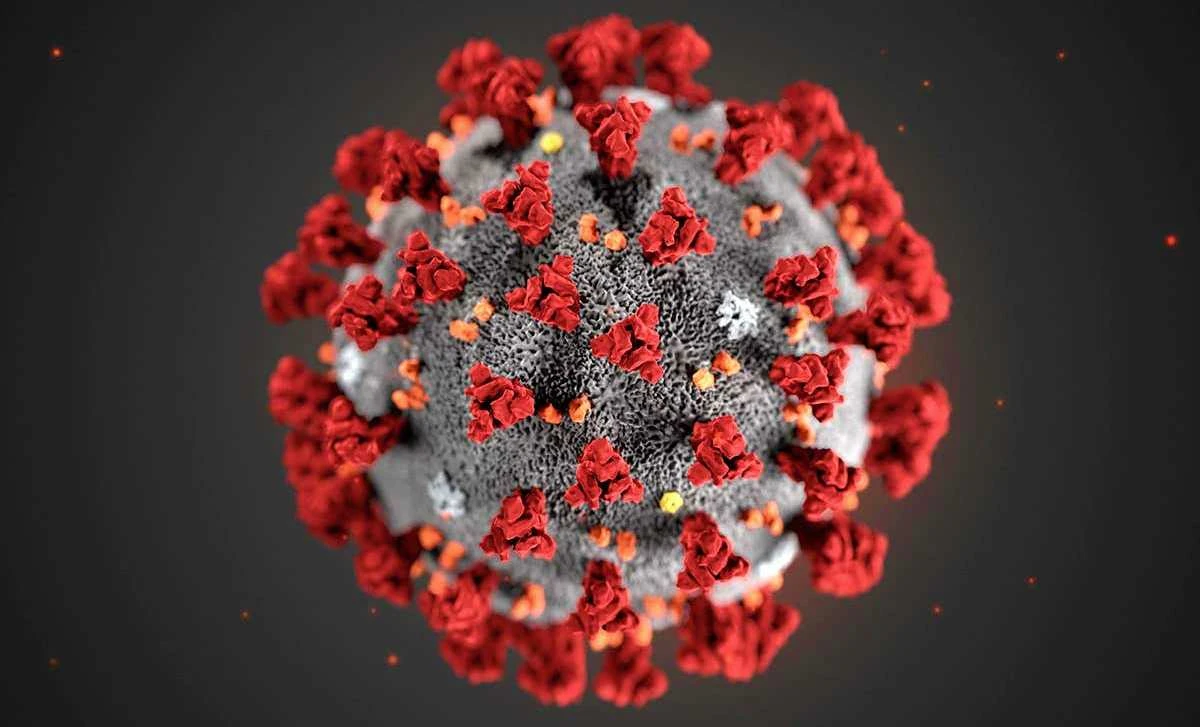Apple and Google have started the release of their COVID-19 Exposure Notifications system that could allow governments across the globe to help track the spread of COVID-19 with smartphone apps, alerting users who come in close contact with someone who tested positive for the novel coronavirus.
The Apple/Google technology allows health authorities to build apps that use Bluetooth technology to notify users who come in close proximity to other app users who report positive COVID-19 tests.
So far, officials from 22 countries on five continents have received access to the technology, which is designed to be used to implement contact tracing, the process of tracking the spread of the coronavirus by tracing the movements of those who have tested positive, the companies say.
Both companies have pledged that use of all apps built using their technology will be voluntary, with users given the choice to opt-in to both sharing their positive test results and being notified of possible exposure to the virus.
Apple and Google say that they are also barring governments that use their software from collecting GPS location data, and that their software stores the logs of people with whom users have been in contact remotely on their personal devices, in a “decentralized” process that is out of health authorities’ reach.
To be effective, the system will require millions of people to opt into the system and trust both companies safeguards.
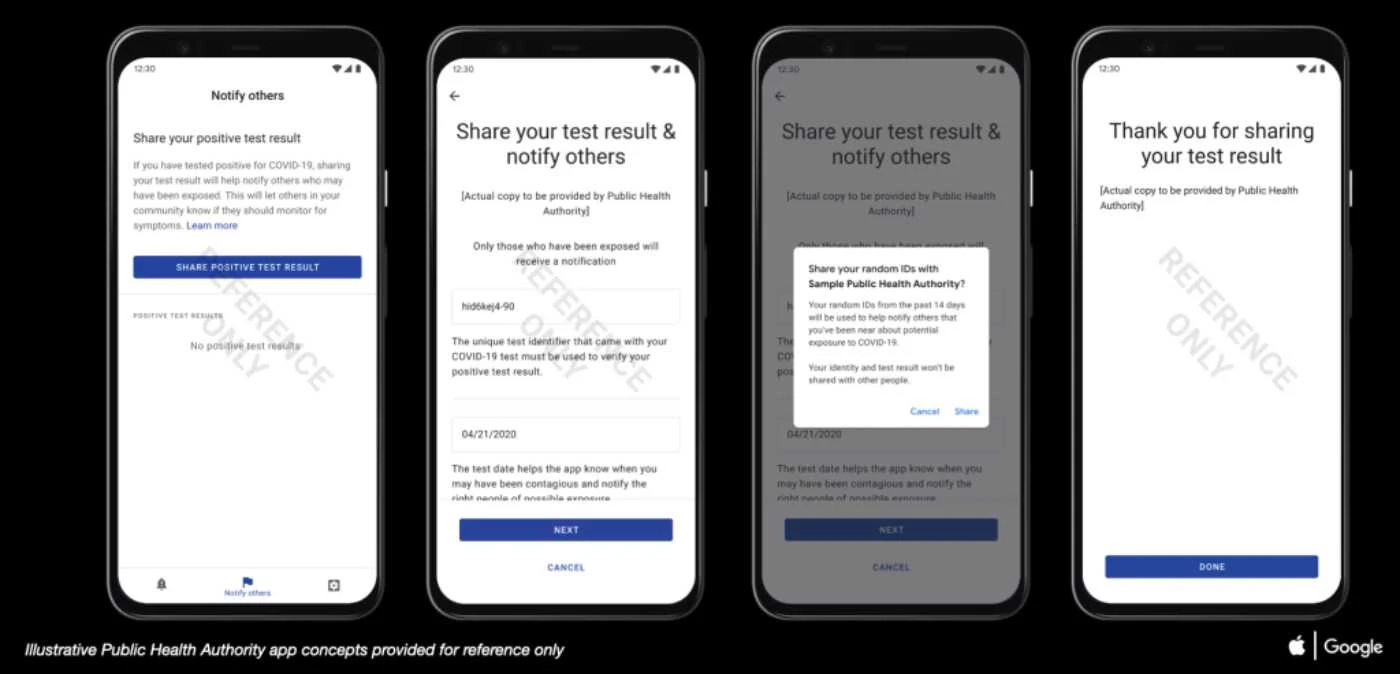
Under the plan, smartphones with the contact tracing technology will emit unique Bluetooth signals. Phones within about 6ft can then record anonymous information about their encounters.
People who test positive for coronavirus can opt to send an encrypted list of phones they came near to Apple and Google, which will trigger alerts to potentially exposed users to seek more information.
Public health authorities would need to confirm that a person has tested positive for COVID-19 before they can send on the data.
The logs will be scrambled to keep infected individuals’ data anonymous – even to Apple, Google and contact tracing app makers, the two companies said. They added that their contact tracing system will not track GPS location.
The two companies have released details of the cryptography specifications they use to safeguard privacy, and details of the role Bluetooth plays.
A Working Example
- Two people are near each other for a period of time. Their phones exchange anonymous identifiers (which change every 15 minutes).
- Later on, one of those people is diagnosed with COVID-19 and enters it into the system via a Public Health Authority app that has integrated the API.
- With an additional consent, the diagnosed user allows his anonymous identifiers for the last 14 days to be transmitted to the system.
- The person they came into contact with has a Public Health app on their phone that downloads the broadcast keys of positive tests and alerts them to a match.
- The app gives them more information on how to proceed from there.
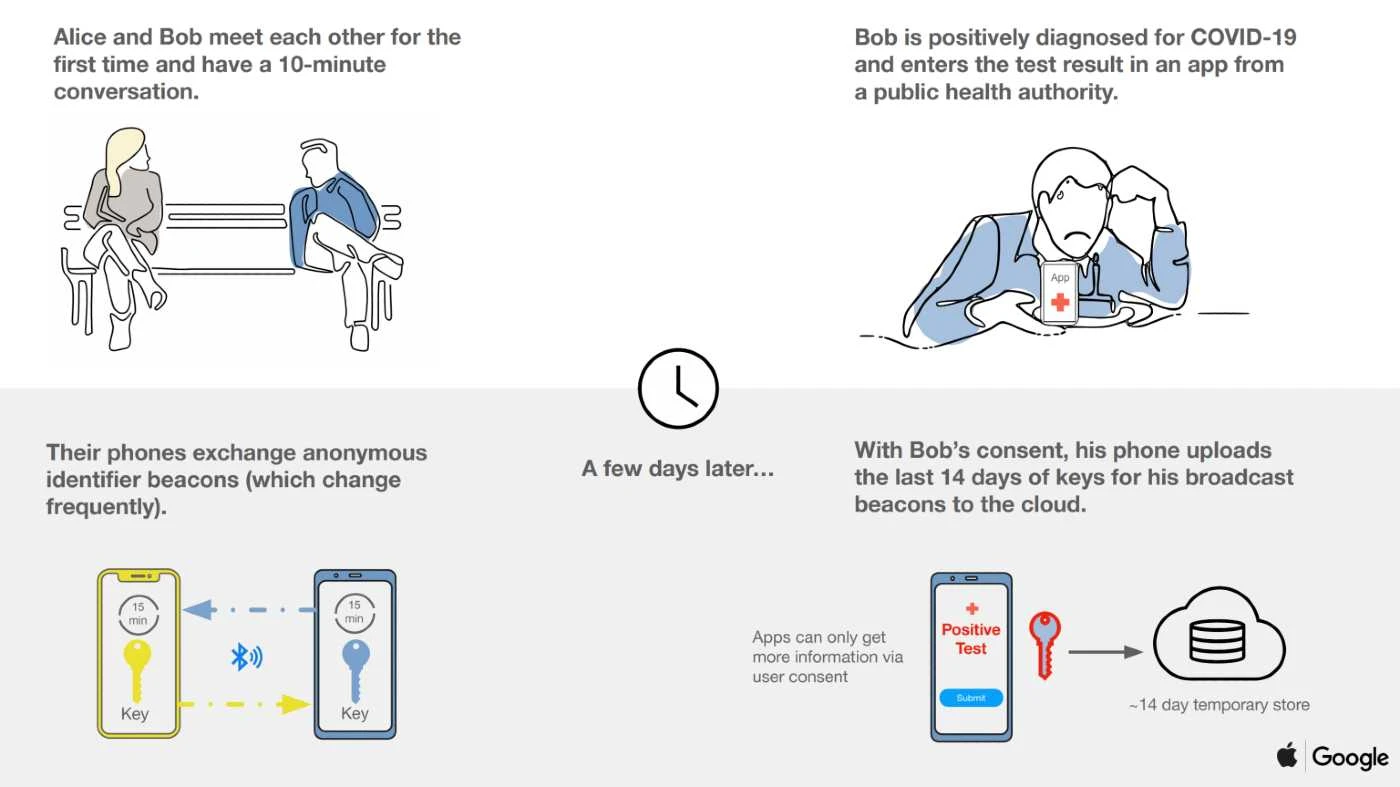
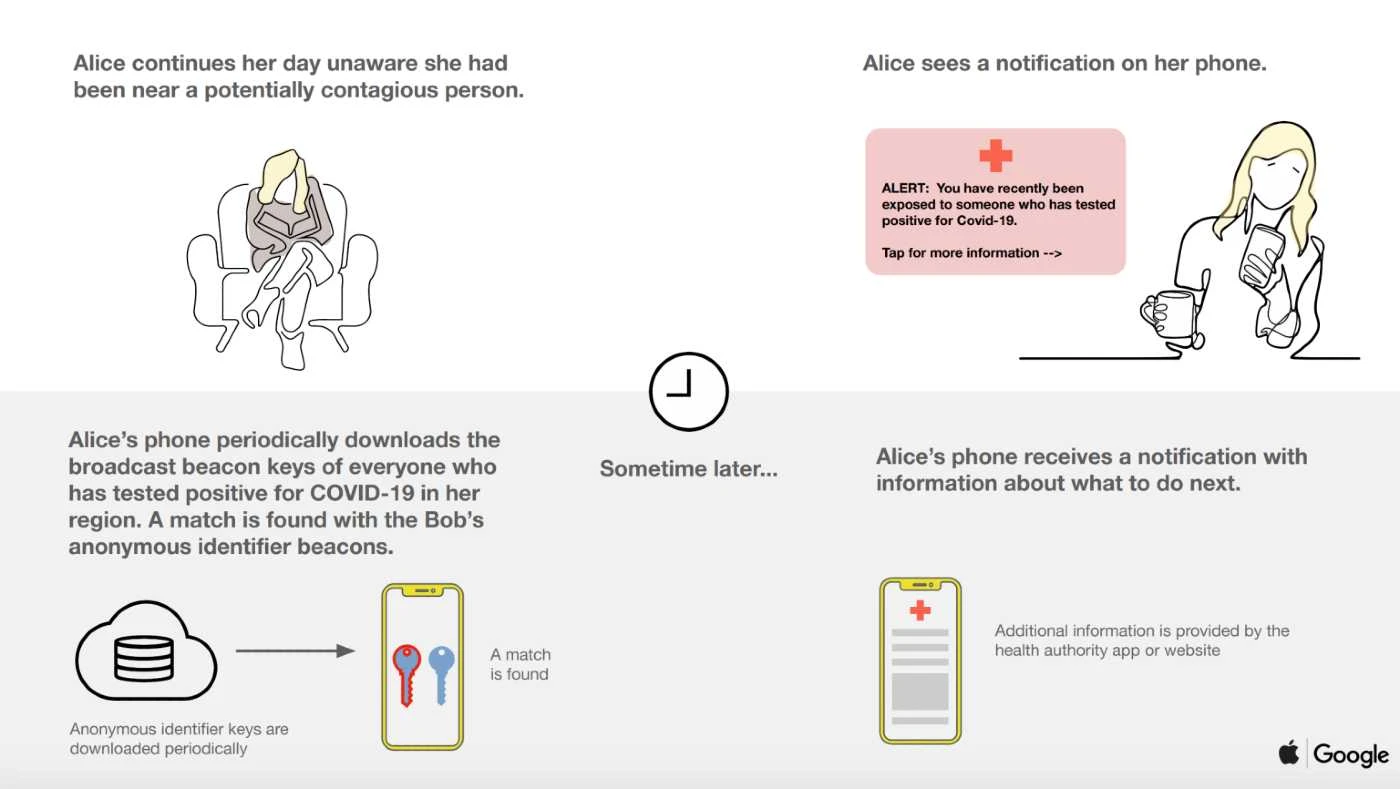
Some governments, including in the U.K., have rejected the Apple/Google approach in favor of apps that store data on servers overseen by the government.
U.K. officials have said that such a system allows authorities to analyze data in ways that are not possible under decentralized systems, making their version of the app more effective. That approach, however, has raised the hackles of some privacy lawyers.
With today’s launch, Android users will have to download an app from a local health agency to get started. They will then be prompted to enable exposure notifications with the ability to disable at any time. Matching occurs entirely on-device, with Google and Apple planning to shut down the system on a regional basis when it’s no longer needed.
Exposure notifications are available on Android 6.0+ Marshmallow and later. The capability is powered by Google Play Services and the necessary update will be rolling out over the next week. From your phone’s settings app, visit the “Google” menu to control.
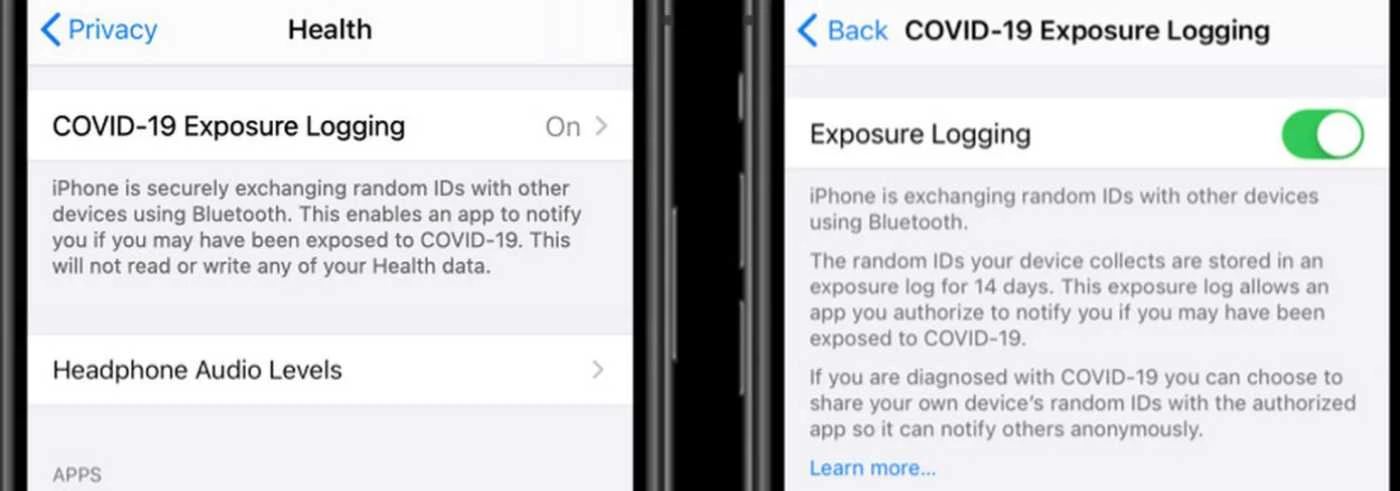
Apple have today released the final iOS 13.5 with exposure notifications support.
Later this year, “Phase 2” will not require an app to be installed, as the Exposure Notifications will be more closely integrated with Android and iOS operating systems.

